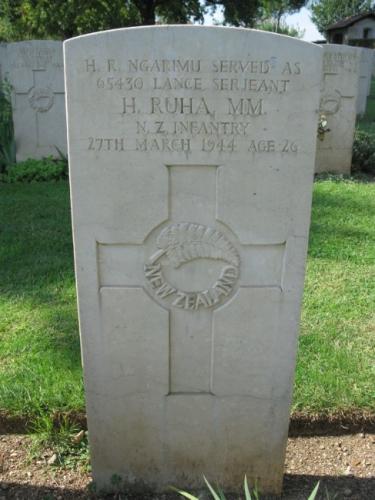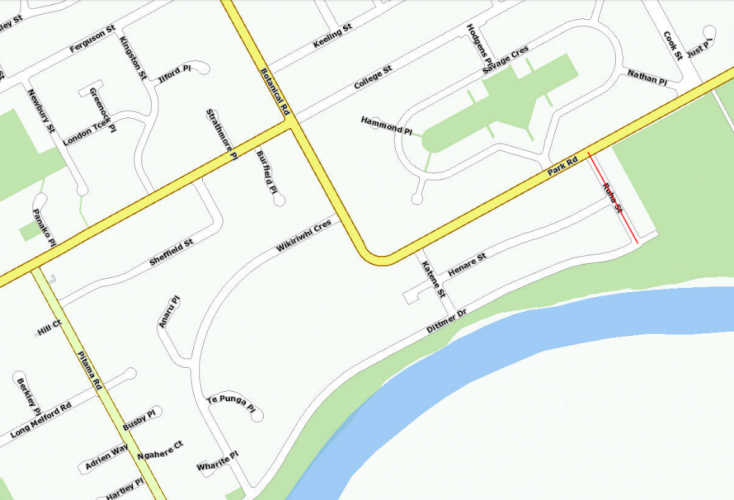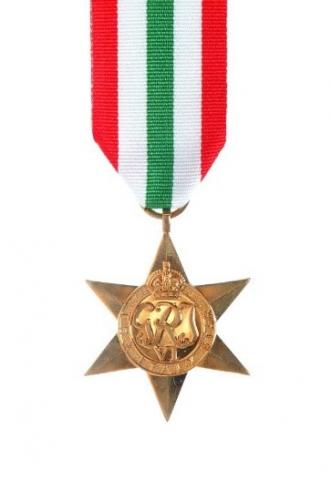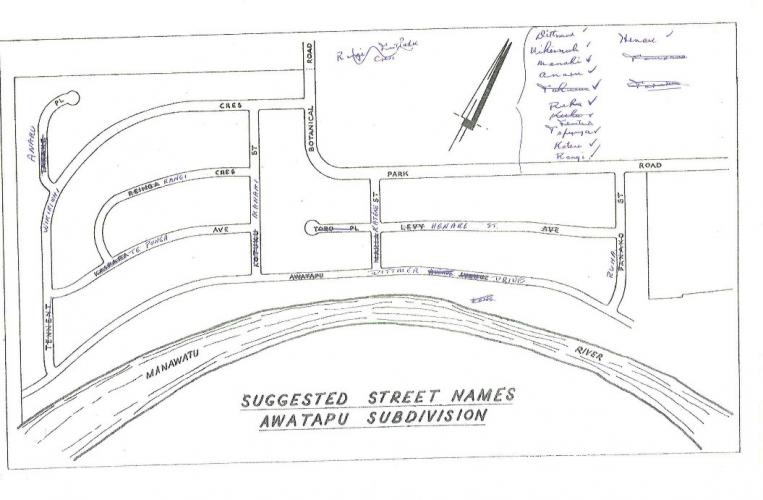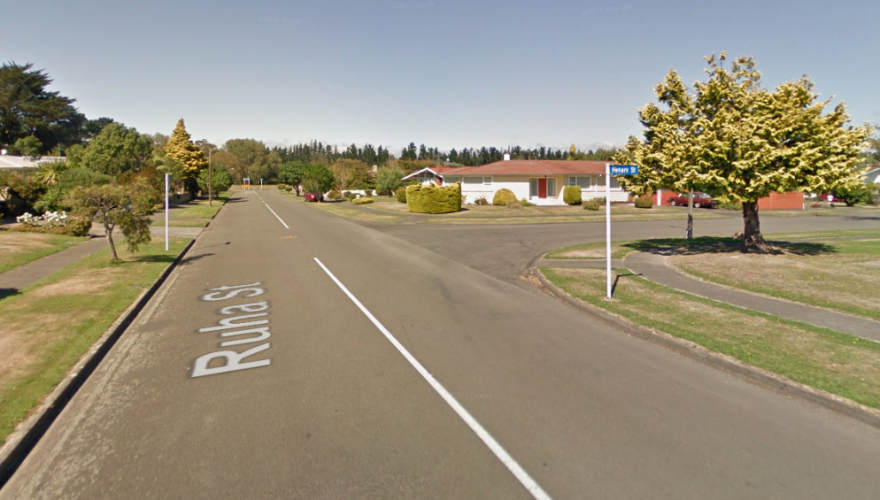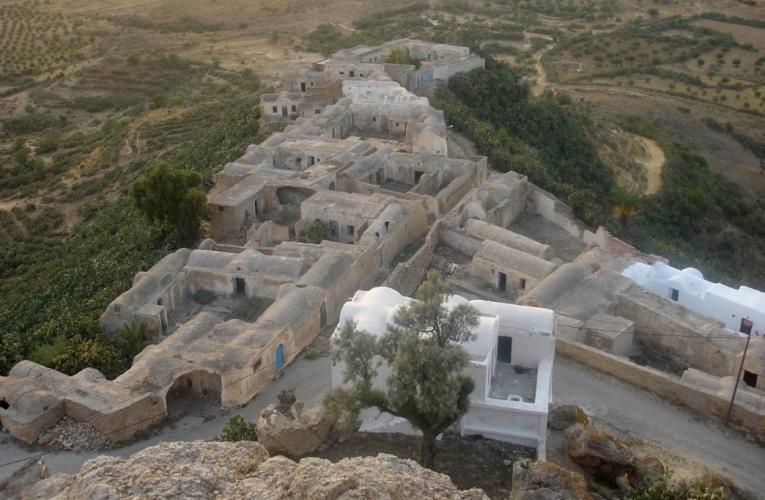092 Ruha Street Palmerston North, street scene 2017
Reason for the name
This street was named in honour of Lance Sergeant Harold Ruha MM, 28th Maori Battalion
Prior to its subdivision, the land known as Awatapu was a golf course and grazing area situated next to the Manawatu River. In order to free up land for residential development and increase revenue, a Council meeting of 16 April 1963 resolved to subdivide the area via “disposal of sections through Land Agents at pre-determined figures fixed by the Council”. The new Awatapu College had to be allowed for, and the old Awatapu Golf Links shifted upstream to Brightwater Terrace, which then became the Palmerston North Golf Club.
As part of the process of subdividing and naming streets, George Dittmer was contacted in late 1964 to give his thoughts on the naming of streets after 28th Māori Battalion soldiers as a commemoration of their service to their country. Dittmer provided a comprehensive list of soldiers who had served under him which was later utilised by the Council to adopt further street names in the Awatapu subdivision. After consultation and further correspondence with the Palmerston North City Council it was decided that Panako Street would be renamed Ruha Street in honour of Harold Ruha Ngarimu, a soldier who had distinguished himself during the Battle of Takrouna in Libyan campaign in 1943. The resolution to rename was passed by Council on 22 November 1965 and took effect from 1 February 1966.
Ruha Street contains 18 residential houses and is the eastern most of the Awatapu streets commemorating 28th Maori Battalion individuals. Ruha Street runs perpendicular to both Park Road and Dittmer Drive, with Henare Street intersecting its midsection from the west. To the east lie the Lido Aquatic Centre, Victoria Esplanade and Palmerston North Holiday Park, with Dittmer Reserve and the Manawatu River bordering its southern end. The historic Savage Crescent development lies to the north of the street.
Author: Evan Greensides, Research Assistant for Palmerston North City Library.
Harold Ruha Ngarimu was born on 12 July 1919 to Mrs Mereraiha Ruha and Mr Ruha of Mokai, Rotorua. Growing up in the region, when war arrived in 1939 he was a bushman living in the rural Mokai region of the Wiakato, north of Lake Taupo. Enlisting on 23 July 1940 as Harold Ruha, he was not called upon to commence his service until 17 April 1941, whereupon he was sent to Papakura Military Camp.
After completing months of basic training, Harold was sent to Egpyt as part of the 6th Reinforcements. Upon reaching the Middle East, Harold was sent to a training division and was given further instruction on tactics in the desert environment while he acclimatised to the area. In January 1942 Harold was marched in to the 28th Maori Battalion as they rested at their camp in Kabrit, soon being attached to the anti-aircraft section of the Battalion. In March, the Second New Zealand Division was transferred to Syria where it was assigned less onerous tasks than they had been given in the Libyan Campaign, providing guard tasks to Allied assets in the region. However, by mid-June Harold and the men of 28th Maori Battalion were back in the frontlines fighting off Rommel’s latest offensive into Egypt.
In late June the 28th Maori Battalion was involved in the breakout of the pocket at Minqar Qaim, managing to perform a strategic withdrawal to the Kaponga Box where they would slow Rommel’s advance further. By early July Harold was part of the backbone of the El Alamein defensive line. As the Panzerarmee continued to attack the line, Harold was wounded in action on 5 July. Admitted to 1NZ General Hospital, Harold underwent surgery and made a full recovery, eventually being sent back to the Battalion on 3 September. Upon his return, Harold attended a platoon weapons course throughout the month of September, the training of which would come to good use in late October while participating in the assault on Miteiriya Ridge and breakthrough at Alamein. Proving to be a valuable asset to the Battalion, Harold would be promoted to the rank of Lance Corporal on 5 November 1942.
As 2 NZ Division advanced through Libya it took the main centre of Tripoli, with the 28 Maori Battalion leading the way for 5 Brigade. After a brief rest and the incorporation of men from the Eighth Reinforcements, the Battalion was sent eastwards to Medenine where it would fight a defensive action. However, it was April 1943 at Takrouna where both Harold and the entire Battalion would come into their own.
As part of C Company, Lance Corporal Ruha and 9 other men were led by Sergeant Rogers. They were to create a diversion by which D Company would flank Takrouna and take it from the rear. While this ad hoc platoon took their objective, they were subject to a fierce counterattack, as stated in this citation:
In the attack on Takrouna on the night of April 19/20 1943, L/Cpl Ruha was a member of the party of nine men which attacked the fort crowning the village. During a counter-attack by the enemy, some broke into the lodgment gained by the party. L/Cpl Ruha immediately rallied the party around him and attacked fiercely. He was severely wounded but carried on until the situation was restored and the enemy destroyed. His complete disregard of danger was an inspiration to his comrades and of great assistance to his commander.
In addition, with the enemy withdrawing and the men in possession of the heights, “Corporal Ruha, ensconced on the cupola of the mosque, picked out two of our captured 25-pounders and with his rifle prevented them not only from firing but also from being withdrawn to a safer position”. During these actions Harold was wounded on 20 April and was evacuated. His wounds were comparatively minor and he was discharged on 2 May. For his gallantry at Takrouna, Harold Ruha received the Military Medal on 29 June 1943.
During this time period the Battalion was rested and refitted, also undertaking a 100 mile march from Maadi to Alexandria to prepare for the coming Italian campaign. On 17 October 1943, Harold and the Second New Zealand Division began embarking in Alexandria for their move to Italy. After landing in Taranto the men undertook training via divisional exercises, afterwards acting as a reserve force for the 2 NZ Expeditionary Force as they began their advance on the Sangro. On December 7th the Battalion sees its first action Italy as they attempt to take Orsogna. Harold, As part of C Company, would advance up the Pascuccio spur and hold as deep as the railway line. On Christmas Day, Harold was promoted to Lance Sergeant.
As 1944 arrives, the Battalion are at Lanciano and later in the month move to Piedimonte d’Alife where they acclimatise to the snow and continue to train, including practicing river crossings. As they advance up the Rapido River, the Battalion is drawn in to the fighting around Monte Cassino and begin attacking the railway station, suffering heavy casualties. While they are quickly withdrawn to regroup, the Battalion were sent back in to the ruins during the Third Battle of Cassino in March. As part of General Freyberg’s plan to take the township via bombing and direct assault, Harold and the men of C Company were tasked as assault groups, fighting German paratroops in close-quarter combat. The next two weeks involved the clearing out of the township, was which completed on the 25 March, the day before the Battalion was to be replaced in the frontline by 24 Battalion. It was during this time that Harold was wounded and evacuated to Presenzano, near Naples; he succumbed to these wounds on 27 March1944. Harold was unmarried and left the entirety of his War Service Gratuity to his mother, Mereraiha Ruha. Harold Ruha remains in Italy with his fellow soldiers at the Cassino War Cemetery in Block VI, Section G, Grave 15.
Honours and Awards
- Military Medal (MM)
- 1939 - 1945 Star
- Africa Star with 8th Army Clasp
- Italy Star
- War Medal, 1939 – 1945
- New Zealand War Service Medal

